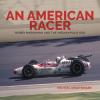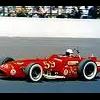Hello there, I was recently wondering about one topic.
Starting from the 1961 start of Jack Brabham in Cooper, and continuing in whole decade, there was a growing intrest in this great american race from european drivers and constructors. Several fantastic F1 drivers took part in race, and two of them managed to win. European car builders like Lotus, Brabham or Lola also achieved considerable degree of success. But then, with the end of the decade it pretty much ended. Lotus stopped their indycar effort with an unraced 64, Hulme last started in 1971. 1972 race was All-American again (taking drivers into consideration)
And my question is: Why this happened? ![]()
I think that Indy 500 was still a very important race, with an enormous purse. Why there was no Top Formula One pilots and small amount of european constructors racing there? Mclaren and Lola achieved victories in 1970s so it was certainly possible with some effort.






















